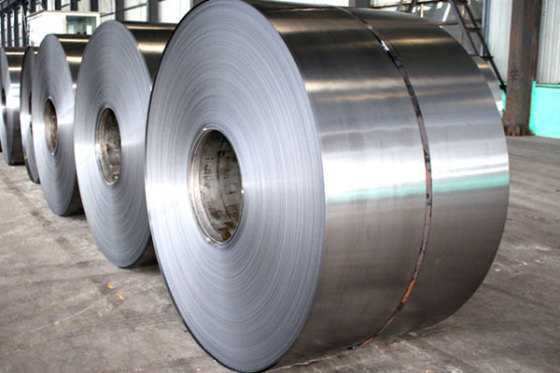Causes of chromatic aberration on the surface of stainless steel color coating
Release time:2022-08-24

What are the reasons for the color difference on the surface of stainless steel color coating? How to buy?
Paint, film thickness, viscosity, plate temperature, cooling water, curing oven, uneven or no stirring of paint will cause color difference on the surface of stainless steel color coating.
1. Paint
1. Refers to the color difference (light color) of paint in different batches or buckets.
2. Paint pigments and fillers are different.
3. When changing to a new batch number or new paint, it begins to extend from the feed port to the return port, resulting in a color difference.
4. Features: It extends from the side of the feed port to the direction of the return port, and it is distributed in a strip shape and gradually widens.
5. Solution: find the reason from the paint itself.
6. Confirmation: Compare the laboratory scraper with one plate and two batches.
2. Film thickness
1. Refers to the color difference caused by the different thickness of the paint film.
2. The viscosity of the coating and the pressure change between the applicator rolls.
3. Refers to different stainless steel color coating rollers or both sides of the same stainless steel color coating roller.
4. There are no noticeable changes, but there are significant differences between volumes.
5. Solution: strictly control the amount of paint.
6. Confirmation: Pay attention to the change in the amount of paint.
3. Stickiness
1. Refers to the color difference caused by low or high viscosity on the computer.
2. The viscosity in the barrel is very different from the viscosity of the barrel paint.
3. After a few minutes of paint change, the color difference of the ribbon appears on the side of the feeding port.
4. This example is the same as the previous film thickness variation. In essence, a high or low viscosity will eventually cause a change in film thickness.
5. Solution: After changing the paint for a few minutes, the color difference of the ribbon appears from the side of the feeding port.
6. Pay attention to paint consumption.
4. Plate temperature
1. The color difference caused by the temperature of the fingerboard is too high or too low.
2. The furnace temperature setting is unreasonable, and the feeding is wrong.
3. Phenomenon: The gloss of the layout is not high, and the MEK is unqualified.
4. There is no problem with the same panel, but different volumes vary greatly.
5. Solution: Test the temperature of the stainless steel color-coated coil from time to time, and replace the specification (with a large difference) to measure the temperature of the coil.
6. Determination: MEK scratch gloss
5. Cooling water
1. Color difference caused by water quality.
2. The water quality is not good, and the effect of the press roll is not good.
3. Phenomenon: The board surface is black and the gloss is not high.
4. Features: Surface dirt can be wiped off with cotton yarn.
5. Solution: replace the cooling water in time to enhance the pressing effect of the press roll.
6. Confirmation: The surface gloss of the stainless steel color coating roller is not high, but the surface dirt can be wiped off with cotton yarn to restore the original gloss.
6. Curing furnace
1. Refers to the color of both sides of the board.
2. The temperature of the drive side and the operation side of the curing oven is not uniform.
3. Features: There is no obvious chromatic aberration in the longitudinal direction, and the chromatic aberration in the lateral direction is large (similar to the difference in film thickness on both sides).
7. The paint is not evenly mixed or not stirred well.
1. It is distributed on the board in a strip shape.
2. Paint layering, resulting in viscosity differences.
For more information on stainless steel color coating, you can contact us.


